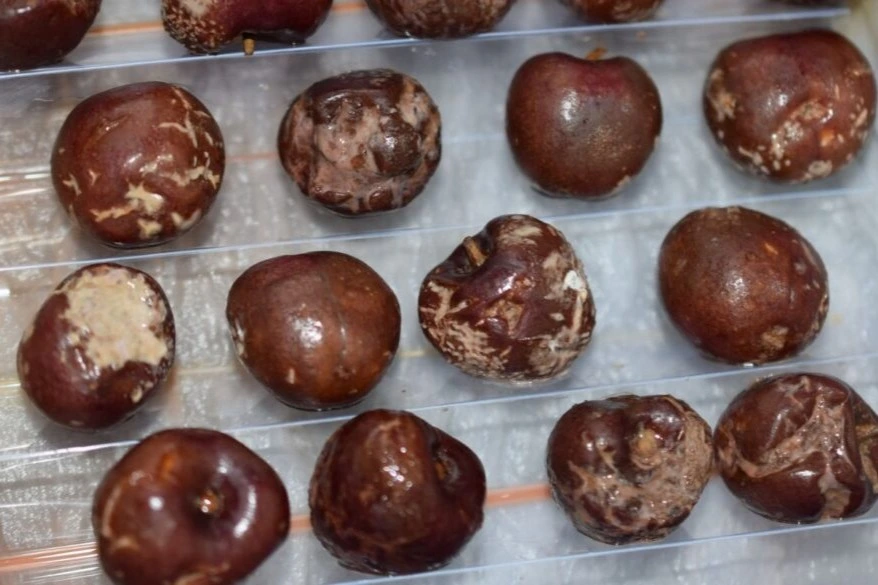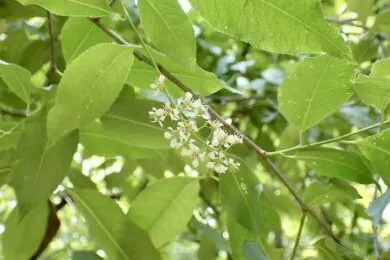The main cost in cherry cultivation is labor, so improving its efficiency translates into a significant contribution to both production and economic results. This is important, but not enough. Effective cultivation practices must also be a focus. Renowned academic and consultant Óscar Carrasco shares key insights to achieve these goals.
Carrasco, a professor of horticulture at the University of Chile and consultant, has published and presented at various conferences his perspective on how to reduce cherry cultivation costs. This is a crucial aspect today, especially now that margins have shrunk or, in some cases, turned negative.
This year, growers have faced limitations in funding sources, which are now starting to perceive market risks in a sector where, until recently, the only threats were climate and the pandemic.
 Image 1. Óscar Carrasco
Image 1. Óscar Carrasco
Labor Efficiency
“Farms have tried to finance labor using their few remaining reserves,” observes Carrasco, “because labor must be paid immediately. Inputs, on the other hand, can be negotiated with suppliers, deadlines can be set, and interest paid. A tight budget makes it hard to retain staff, leading to high turnover. The remaining workers are often less skilled and harder to manage. Managers are facing tough times.”
“To increase labor efficiency, instructions must be simplified as much as possible. How to do that?”
“Nowadays, many agricultural workers are immigrants with low levels of education and no experience with Chilean fruit crops. In addition, those who work sporadically – with breaks of weeks or months – forget almost everything they have learned. We see this clearly, even in simple habits like respecting work hours. These all contribute to low labor productivity. The solution is to avoid complex tasks and give binary instructions, such as all or nothing.”
Instructions and Error Control
Striving for perfection leads to more mistakes. Carrasco uses the example of tipping lateral branches:
“You shouldn't say: ‘tip the longer ones and leave the others’. The instruction must be: either tip all the branches or none.”
“When you try to be a perfectionist, it ends up worse – he says – more mistakes are made. We’ve seen this repeatedly in apples, and now in cherries as well.”
Binary instructions make errors more visible and easier to control. If you ask to tip all the branches, it’s easy to spot those left untouched. Conversely, if tipping is not required, any cuts will clearly reveal the mistake.
 Image 2. The single-axis system requires a relatively low investment for tree training.
Image 2. The single-axis system requires a relatively low investment for tree training.
The Tandem Method
For more complex tasks, Carrasco proposes a tandem system:
- A first group executes a binary instruction;
- A second group performs a single complementary task.
“For example, one team is trained only to remove thick branches, focusing solely on diameter. If we say ‘remove the largest branch’, each person will interpret it differently. Better to say: ‘remove the thickest branch’.”
The second group focuses solely on removing vertical water sprouts.
The third performs tipping or small cuts: these are the true pruners. The others set the stage.”
Clear and Simplified Instructions
“We talk a lot with team leaders, asking how they would explain the task to the pruner. We invite them to give us the instruction directly. Sometimes, even they are unclear and get confused. If the person giving instructions is not clear or precise, many mistakes will be made. But it’s also important to listen to them: they often have ideas to further simplify the instructions. We take time to evaluate which guidelines work best.”
“Not all instructions can be binary, but in such cases you need better-trained staff, specialized teams. Writing a protocol helps – says Carrasco – but it must be short, just a few lines. Otherwise, the worker will get lost. I’ve seen two-page protocols: they’re useless.”
 Image 3. Workers with breaks of weeks or months forget almost everything they’ve learned. The solution is to give the simplest possible instructions.
Image 3. Workers with breaks of weeks or months forget almost everything they’ve learned. The solution is to give the simplest possible instructions.
Timing and Economic Efficiency
“If you’re late, it will cost more.” This applies to every operation. “Weed control is a clear example: if done too late, weeds become resistant, requiring more chemicals, more water, worse results, and repeated treatments two or three times.”
The same goes for late thinning, which leads to smaller fruit sizes, resulting in lower income.
“The goal is to avoid harvesting small fruits that don’t cover costs or are unsellable. The aim should be to produce the highest percentage possible of large-sized fruit. Everything depends on pruning, nutrition, irrigation, and overall management.”
“At harvest, however, there will always be some small fruits, L and XL. In areas with weak or diseased trees, it’s better not to harvest. If a tree only has small fruit, skip it. Sometimes, even within a single tree, some branches have fruit without proper size or color: leave them. The minimum is 2J, that is 28 mm and above.”
Training Systems
Workers with long breaks forget almost everything they’ve learned. The solution is to give the simplest instructions possible.
According to Carrasco, systems like V-trellis or KGB allow greater labor efficiency during harvest, as all fruit is on a single plane. However, they require higher initial investment or are harder to train.
The monoeje, widely used in the country, is managed in a very three-dimensional way: each branch divides into secondary and tertiary branches, making the tree structurally complex and hard to manage with simple instructions. However, there are alternative training options.
“Even though it’s naturally three-dimensional, branches can be kept linear or tubular, as we’ve called them, but this requires more ladder movements to go around the tree. Each branch is handled as if it were a tube, with small shoots and fruit close to the main limb, improving system efficiency. In pruning, branches must be brought as close as possible to the main limb to create this ‘tube’.”
 Image 4. Overload in Lapins variety. Pruning and bud thinning are essential tools to avoid excessive fruiting.
Image 4. Overload in Lapins variety. Pruning and bud thinning are essential tools to avoid excessive fruiting.
“I’ve always liked the monoeje system,” he continues. “It can be kept low, resulting in a ‘friendly’ tree, especially during the training phase. Systems like V-trellis are very efficient for harvesting, but require high investments: many labor days for training, tying... The central leader system is simpler. And today, growers are not in a position to make major investments, except for large, well-established companies.”
In his presentations and publications, Carrasco emphasizes the importance of focusing on direct costs that clearly add value to the quality and quantity of the product.
– Which costs add value, and which ones should be reconsidered, for example?
“Proper pruning adds value because it removes weak wood and leaves the tree in better condition to produce large-sized fruit. Bud thinning, or ‘Chinese thinning,’ definitely provides benefits by improving the leaf-to-fruit ratio.”
“On the other hand, flower and fruit thinning contribute marginally, as they have a very limited effect on fruit size and require many labor days. The same goes for fertilizers: beyond a certain threshold, they no longer add value but simply increase costs.”
Varietal Optimization and Replanting
“Many cosmetic foliar applications do not improve either the size or condition of the fruit; the tree may look better, but the economic result remains unchanged. It is up to the supplying companies to prove, through 2–3 years of trials, that their products impact parameters like size or soluble solids.”
Growth regulators and bud break harmonizers (which can cost over US$500/ha – about €470/ha per treatment) must also be thoroughly justified and never applied “just in case.”
Analyzing settlement results based on size and packing percentage, Carrasco concludes that these variables—especially fruit size—are those that most increase marginal profit.
“Between a 26 (J) and a 28 (2J) caliber, the price difference can be up to US$2/kg (about €1.90/kg). Between a 26 and a 30, the difference can reach US$4/kg (about €3.80/kg).”
– Is it possible to aim beyond 2J?
“The goal is to reach 80% of 2J-sized fruit in packed cherries. If you get there, you're already very close to the maximum possible. Most orchards are between 60 and 70% 2J: we need to make the leap to 80%.”
“This is achieved primarily through rather severe pruning, like what we are doing this year, reducing production to 15,000 kg/ha, or even 12,000 kg/ha in some cases. In the past, producing 20–25 tons was a good business. Today, if you send small-caliber fruit to market, you lose money—and that has already happened.”
– But Lapins is not like Regina…
“With Regina, the challenge is much greater. Reaching 28 mm in size is more difficult. In that case, achieving 70% of 2J or larger fruit is already an excellent result.”
 Table 1. Effect of cost management changes on marginal profit.
Table 1. Effect of cost management changes on marginal profit.
Orchard Removal and Future Varieties
Growers who plan to stay in the business may consider replacing orchards with a more suitable variety/rootstock combination that improves yield potential and fruit quality.
Considerations for removal and replanting
Even though it may seem like a tough choice, according to Carrasco there is no other solution than to remove trees that no longer deliver the expected yield or fail to meet required sizes and export percentages.
– Should the entire orchard, a plot, a few rows, or only the worst trees be removed?
“All options are valid, depending on the circumstances. In some cases, we’ve removed entire plots located on poor-quality soils. In mixed orchards, where two varieties were grown, we removed only the rows of one variety.
In other cases, we’ve cleared specific sectors, such as low-lying areas prone to waterlogging or frost damage. The operation is planned to leave well-defined sections (quadrants) to optimize mechanization and account for the irrigation layout: it’s not advisable to leave isolated trees. For those who want to remain in the sector, replanting is an option.”
“For example, a Santina that produces small fruit on a very weak rootstock like Gisela 6 can be removed and replanted with a more vigorous rootstock, such as Colt. The effectiveness of soil fumigation to prevent allelopathic effects in cherries is not well proven.”
Soil amendments are necessary, adding abundant organic matter with high phosphorus levels, and incorporating beneficial fungi and bacteria to improve soil microbiology. This helps trees better tolerate replanting conditions.”
“Ideally, you would take a year to:
- thoroughly work the soil,
- remove old roots,
- apply manure,
- add phosphorus,
- and sometimes sow temporary cover crops between rows.”
Variety Choices and Strategies
– What are your current choices in terms of varieties and training systems to optimize the key variables that affect marginal profit?
“Depending on the area, I would opt for a range of early and mid-season varieties that are productive and have good sizing potential. Varieties like Pacific Red or Sweet Aryana show promise and good size, though their postharvest performance still needs evaluation: in small volumes they can be shipped by air, but large-scale maritime shipping may expose defects.”
“Of course, Santina and Lapins are always there. Although there’s new genetics available, I wouldn’t take the risk of planting a new orchard today without first observing 2–3 seasons of actual commercial production.”
Market saturation and the new reality of late-season varieties
“Late varieties are now struggling because the market is saturated. Unlike 10 years ago, when prices rose at the end of the season due to low supply, today there’s a large volume of mid-season varieties that overlap with the late ones, driving prices down.”
Image source: Redagricola
Redagricola Team
Cherry Times – All rights reserved

















